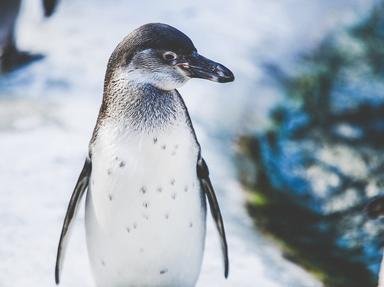Quiz Answer Key and Fun Facts
1. As "March of the Penguins" begins, a group of emperor penguins is leaving the ocean to journey inland to Antarctica in order to find a mate. During what month does this quest begin (or is it most likely to begin if you haven't seen the movie)?
2. Walking is not the emperor penguin's only form of overland locomotion - when the birds are tired of walking, and the terrain is suitable, they will belly-flop down and paddle along the ice.
3. When emperor penguins reach their nesting ground, an elaborate courtship ensues. Once the males and females have paired off, it's for keeps - emperor penguins mate for life.
4. After reaching the nesting ground and finding a mate, emperor penguins are almost immediately besieged by winter. Which of these strategies do they use to combat the hostile Antarctic cold?
5. One of the most remarkable aspects of penguin breeding is that the father penguin will care for the couple's egg. However, the duration of his care, much like the suicidal instincts of lemmings, has been greatly exaggerated by sensationalists over the years; the father penguin will rarely carry the egg for more than a few minutes.
6. After laying her egg, the female penguin heads back to the sea in search of food for themselves and their chicks. However, many of them end up becoming food themselves! Which of these is a predator that emperor penguins have to watch out for?
7. After consuming huge amounts of food in the ocean, the females return to their mates. In groups that may number in the thousands, how do mates find each other?
8. Within a couple days of hatching, most baby emperor penguins are ready to walk about on their own, though they stay close to their mothers who show them how to find food.
9. As with any wild species, some chicks do not survive the initial trials of weather and other perils. When a mother emperor penguin loses her chick, what is she likely to do?
10. Mother and father penguin continue caring for their chick for several months. Then, about nine months after beginning their march to the nesting ground, they return to the ocean. About a month later, their chicks take to the ocean for the first time themselves. Will the chicks return to the nesting ground three months later to begin the cycle again?
Source: Author
stuthehistoryguy
This quiz was reviewed by FunTrivia editor
crisw before going online.
Any errors found in FunTrivia content are routinely corrected through our feedback system.

